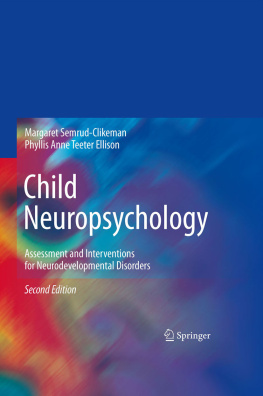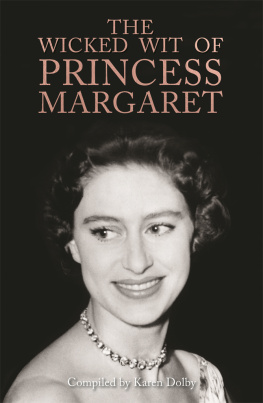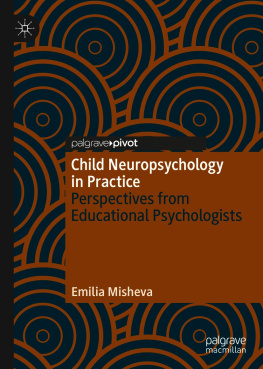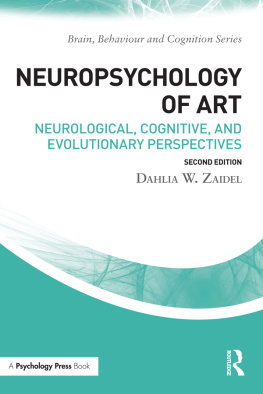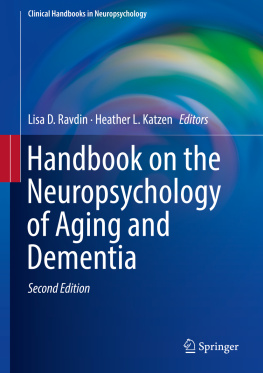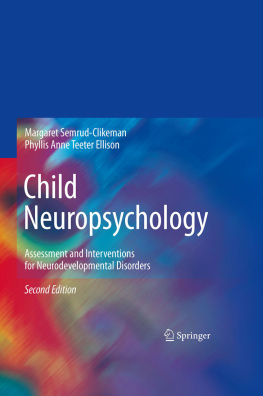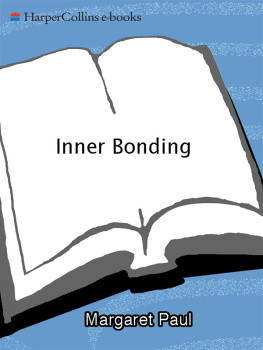Margaret Semrud-Clikeman - Child Neuropsychology
Here you can read online Margaret Semrud-Clikeman - Child Neuropsychology full text of the book (entire story) in english for free. Download pdf and epub, get meaning, cover and reviews about this ebook. year: 0, publisher: Springer US, New York, NY, genre: Children. Description of the work, (preface) as well as reviews are available. Best literature library LitArk.com created for fans of good reading and offers a wide selection of genres:
Romance novel
Science fiction
Adventure
Detective
Science
History
Home and family
Prose
Art
Politics
Computer
Non-fiction
Religion
Business
Children
Humor
Choose a favorite category and find really read worthwhile books. Enjoy immersion in the world of imagination, feel the emotions of the characters or learn something new for yourself, make an fascinating discovery.
- Book:Child Neuropsychology
- Author:
- Publisher:Springer US, New York, NY
- Genre:
- Year:0
- Rating:5 / 5
- Favourites:Add to favourites
- Your mark:
- 100
- 1
- 2
- 3
- 4
- 5
Child Neuropsychology: summary, description and annotation
We offer to read an annotation, description, summary or preface (depends on what the author of the book "Child Neuropsychology" wrote himself). If you haven't found the necessary information about the book — write in the comments, we will try to find it.
Child Neuropsychology — read online for free the complete book (whole text) full work
Below is the text of the book, divided by pages. System saving the place of the last page read, allows you to conveniently read the book "Child Neuropsychology" online for free, without having to search again every time where you left off. Put a bookmark, and you can go to the page where you finished reading at any time.
Font size:
Interval:
Bookmark:
Anatomy and Physiology
Education May be accomplished through a Ph.D. program in Clinical Neuropsychology offered by a psychology department or medical facility or through completion of a Ph.D. program in a related specialty (e.g., clinical psychology, school psychology) that offers sufficient specialization in clinical neuropsychology. |
Required Core |
A. Generic psychology core: |
1. Statistics and methodology |
2. Learning, cognition, and perception |
3. Social psychology and personality |
4. Physiological psychology |
5. Life span development |
6. History of Psychology |
B. Generic clinical core: |
1. Psychopathology |
2. Psychometric theory |
3. Interview and assessment techniques |
a. Interviewing |
b. Intellectual assessment |
c. Personality assessment |
4. Intervention Techniques |
a. Counseling and psychotherapy |
b. Behavior therapy/modification |
c. Consultation |
5. Professional ethics |
C. Neurosciences: Basic human and animal neuropsychology: |
1. Basic neuroscience |
2. Advanced physiological and psychopharmacology |
3. Neuropsychology of perceptual, cognitive, and executive processes |
4. Research design and research practicum in neuropsychology |
D. Specific clinical neuropsychology training: |
1. Clinical neuropsychology and neuropathology |
2. Specialized neuropsychological assessment techniques |
3. Specialized neuropsychological intervention techniques |
4. Assessment practicum with children and/or adults |
5. Clinical neuropsychology internship of 1,800 hours, preferably in university setting |
Internship The internship must devote at least 50 percent of a one-year full-time training experience to neuropsychology. In addition, at least 20 percent of the training must be devoted to general clinical training to ensure competent background in clinical psychology. Supervisors should be board-certified clinical neuropsychologists. |
Font size:
Interval:
Bookmark:
Similar books «Child Neuropsychology»
Look at similar books to Child Neuropsychology. We have selected literature similar in name and meaning in the hope of providing readers with more options to find new, interesting, not yet read works.
Discussion, reviews of the book Child Neuropsychology and just readers' own opinions. Leave your comments, write what you think about the work, its meaning or the main characters. Specify what exactly you liked and what you didn't like, and why you think so.

